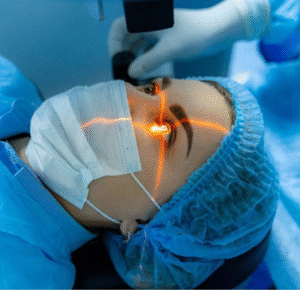1. Introduction to Hyperbaric Oxygen Therapy (HBOT)
Hyperbaric oxygen therapy (HBOT) is a medical treatment that involves breathing 100% oxygen in a pressurized chamber. This therapy is used for various conditions, such as decompression sickness, chronic wounds, and carbon monoxide poisoning. While beneficial, it is important to be aware of potential side effects associated with HBOT.
2. Common Side Effects of HBOT
Common side effects of HBOT include ear pain, sinus pressure, and mild fatigue. These effects occur due to the changes in pressure and increased oxygen levels. Most side effects are temporary and resolve soon after the therapy session ends, but it’s essential to monitor any discomfort.
3. Ear Pain and Barotrauma
Ear pain, or barotrauma, is one of the most frequent side effects of HBOT. It occurs due to the pressure changes in the chamber, which can affect the middle ear. Techniques like yawning or swallowing can help equalize the pressure and alleviate discomfort during the session.
4. Sinus Pressure and Discomfort
Similar to ear pain, sinus pressure can occur during HBOT due to the increased atmospheric pressure. Patients with sinus congestion or allergies might experience more discomfort. Using decongestants or nasal sprays before the session can help reduce this side effect.
5. Temporary Vision Changes
Some patients report temporary vision changes, such as nearsightedness, after HBOT. This is caused by the increased oxygen levels affecting the eye lens. These changes are usually temporary and revert to normal after completing the therapy sessions.
6. Oxygen Toxicity
Oxygen toxicity is a rare but serious side effect of HBOT, occurring when too much oxygen is breathed in for prolonged periods. Symptoms include nausea, dizziness, and convulsions. To prevent this, HBOT sessions are carefully monitored and controlled by medical professionals.
7. Fatigue and Lightheadedness
After an HBOT session, some patients might feel fatigued or lightheaded. This is generally mild and temporary, often resolving within a few hours. Staying hydrated and resting after the therapy can help manage these symptoms effectively.
8. Pulmonary Oxygen Toxicity
Pulmonary oxygen toxicity can occur if high concentrations of oxygen are inhaled over long periods. Symptoms include coughing and difficulty breathing. This condition is rare and usually prevented by adhering to prescribed therapy durations and oxygen levels.
9. Seizures
Seizures are a very rare side effect of HBOT, typically linked to oxygen toxicity. They occur when the brain is exposed to high levels of oxygen. Close monitoring during treatment helps prevent this serious complication, ensuring patient safety.
10. Fire Hazards in HBOT Chambers
Fire hazards in HBOT chambers are a concern due to the high oxygen concentration. Strict safety protocols are followed to minimize risks, such as prohibiting flammable materials and ensuring all electrical equipment is properly maintained and grounded.
11. Claustrophobia and Anxiety
Some patients may experience claustrophobia or anxiety during HBOT sessions due to the confined space of the chamber. Relaxation techniques, such as deep breathing or listening to music, can help alleviate these feelings. In severe cases, mild sedatives may be used.
12. Tooth and Jaw Pain
Tooth and jaw pain can occur during HBOT due to pressure changes affecting dental work or pre-existing dental conditions. Patients with recent dental work should inform their healthcare provider before starting HBOT to mitigate this side effect.
13. Middle Ear Infections
Middle ear infections can develop if barotrauma from HBOT is severe. Symptoms include ear pain, hearing loss, and fluid drainage. Prompt treatment with antibiotics and decongestants can help resolve the infection and prevent further complications.
14. Lung Collapse (Pneumothorax)
A rare but serious side effect of HBOT is lung collapse, or pneumothorax. This occurs when air leaks into the space between the lung and chest wall, causing the lung to collapse. Immediate medical attention is required to treat this condition.
15. Sinus Congestion and Infection
Sinus congestion and infection can occur if pressure changes cause irritation or blockages in the sinuses. Using saline nasal sprays or decongestants before HBOT can help prevent this side effect, ensuring a more comfortable therapy session.
16. Myopia (Nearsightedness)
Some patients may develop temporary myopia, or nearsightedness, after multiple HBOT sessions. This is caused by changes in the eye lens due to prolonged exposure to high oxygen levels. Vision typically returns to normal after the therapy is completed.
17. Hypoglycemia in Diabetic Patients
Diabetic patients undergoing HBOT may experience hypoglycemia, or low blood sugar levels, due to the increased metabolic rate caused by high oxygen levels. Monitoring blood sugar levels closely and adjusting medications as needed can help manage this side effect.
18. Nausea and Vomiting
Nausea and vomiting can occur as a side effect of HBOT, particularly if sessions are prolonged. This is often related to oxygen toxicity. Taking breaks and ensuring sessions are within recommended time limits can help reduce the risk of these symptoms.
19. Changes in Lung Function
Long-term HBOT can cause changes in lung function, particularly in patients with pre-existing lung conditions. Regular monitoring of lung health and function tests can help detect any changes early and adjust therapy as needed to prevent complications.
20. Dehydration
Dehydration can occur during HBOT due to the dry environment of the chamber. Patients are advised to stay well-hydrated before and after sessions to prevent this side effect. Drinking water and using moisturizers can help maintain hydration levels.
21. Skin Irritation and Dryness
Skin irritation and dryness can result from the high oxygen levels and dry environment in the hyperbaric chamber. Using moisturizers and drinking plenty of water can help alleviate these symptoms, ensuring comfort during and after the therapy.
22. Blood Sugar Fluctuations
HBOT can cause fluctuations in blood sugar levels, particularly in diabetic patients. Regular monitoring and adjusting insulin or medication dosages as needed can help manage these changes and maintain stable blood sugar levels throughout the therapy.
23. Swelling of the Optic Nerve
In rare cases, HBOT can cause swelling of the optic nerve, leading to vision problems. Regular eye exams and monitoring by an ophthalmologist can help detect and manage this side effect early, ensuring prompt treatment if necessary.
24. Anxiety Management Techniques
Managing anxiety during HBOT is important for patient comfort. Techniques such as deep breathing, guided imagery, and listening to calming music can help reduce anxiety. In some cases, healthcare providers may recommend mild sedatives to help patients relax.
25. Conclusion
Hyperbaric oxygen therapy offers significant benefits for various medical conditions but is not without potential side effects. Understanding and managing these side effects can help ensure a safe and effective treatment experience. Always consult with healthcare providers to address any concerns and tailor the therapy to individual needs.


